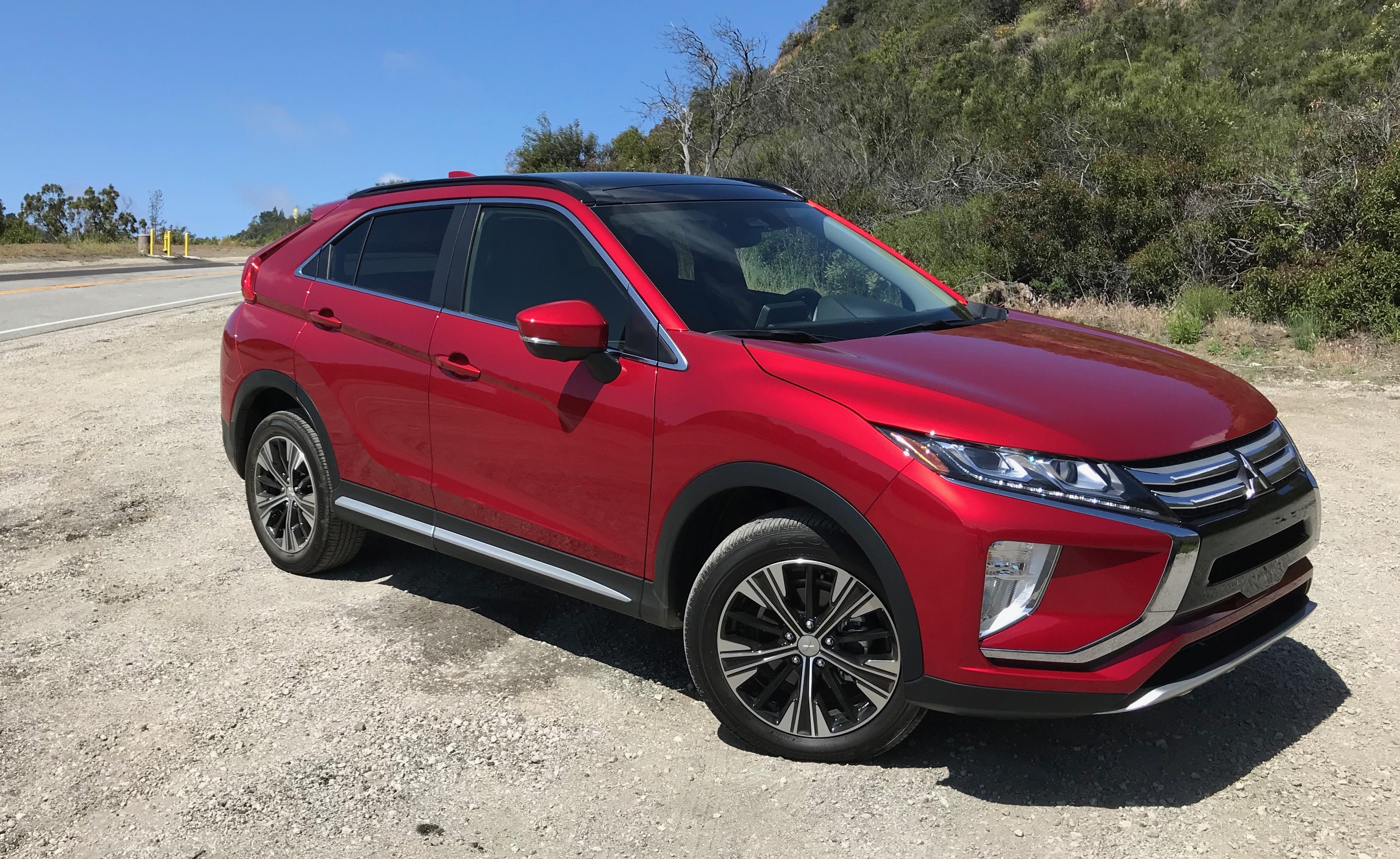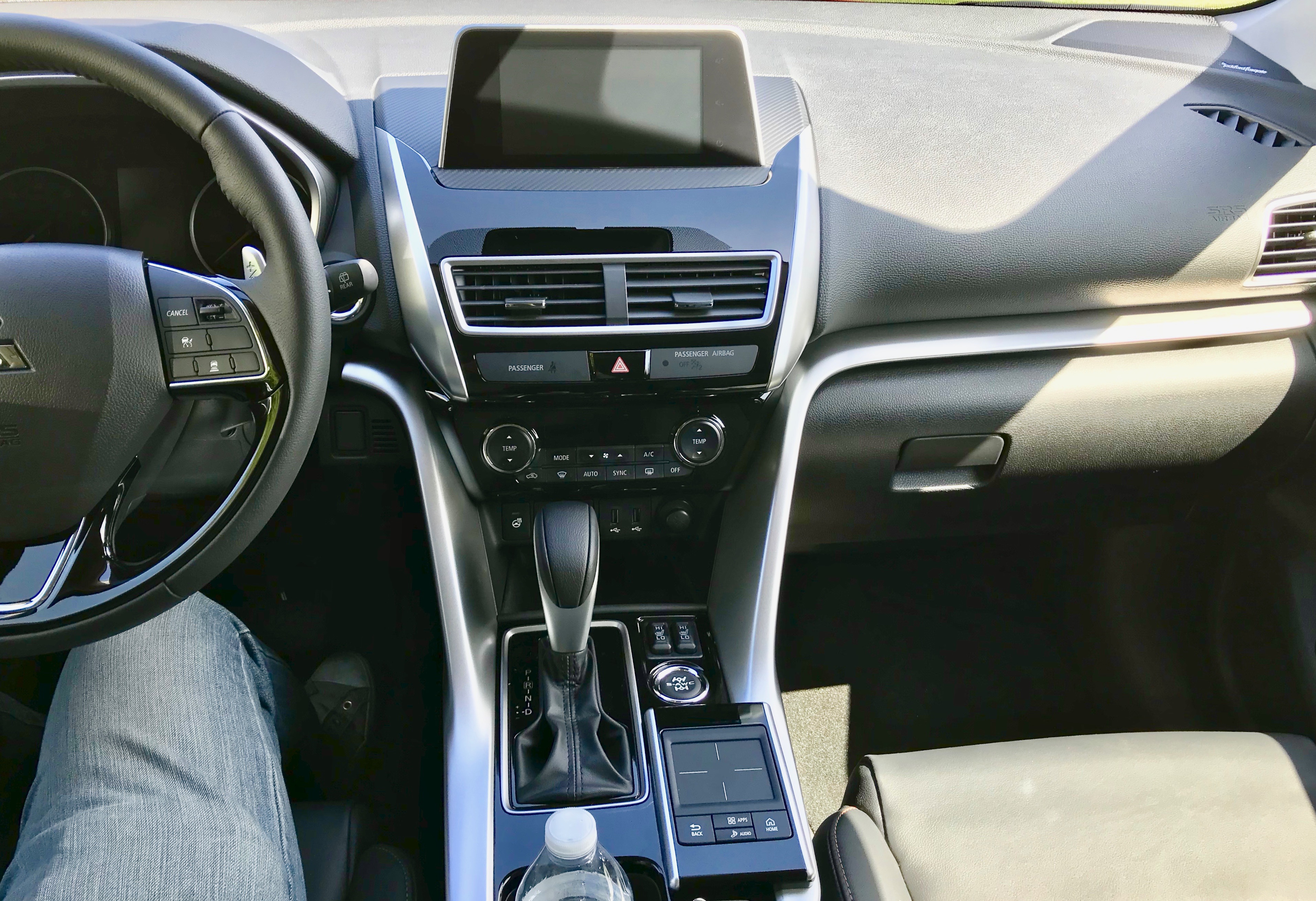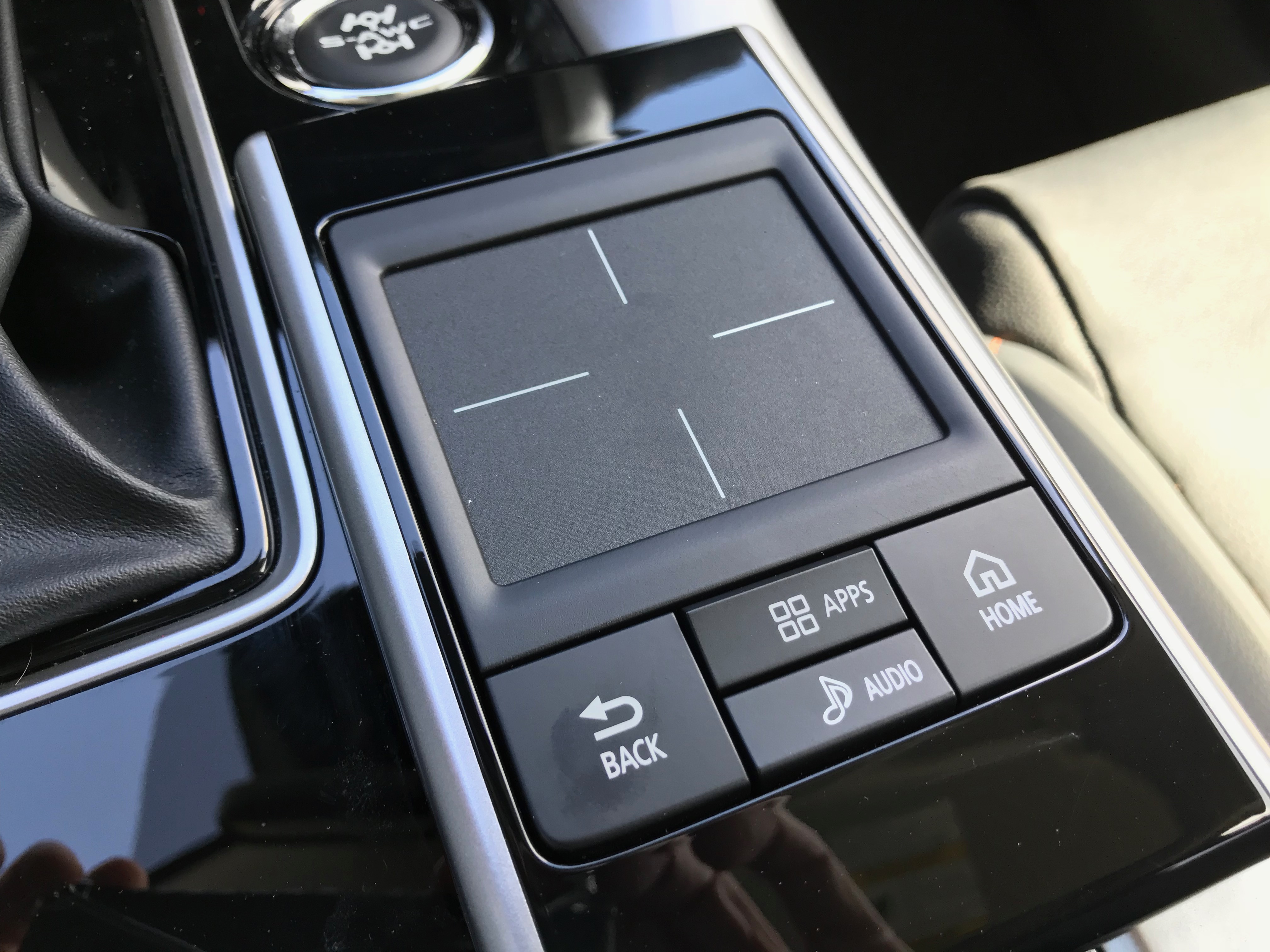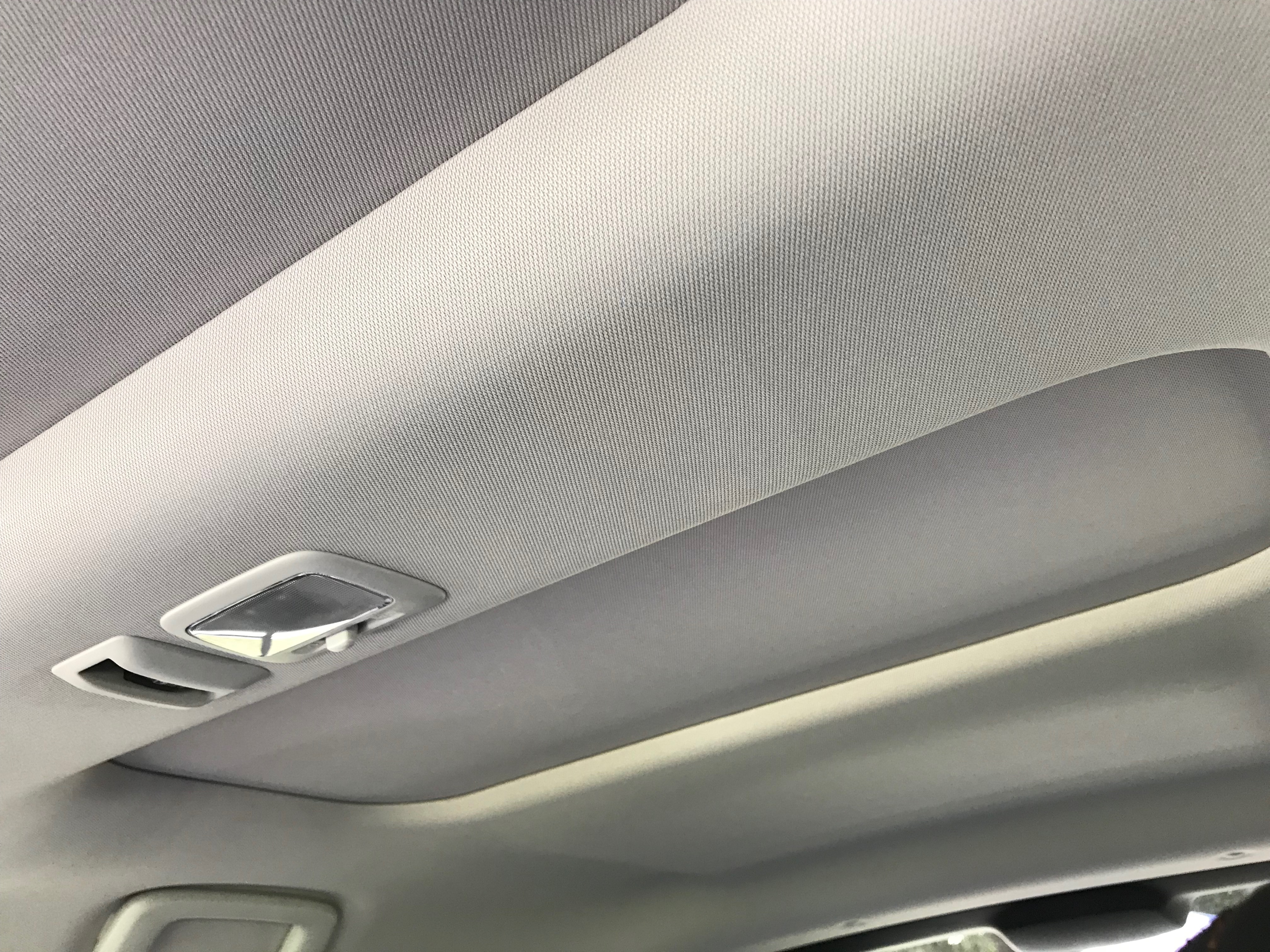
2018 Mitsubishi Eclipse Cross
Returning some sparkle to the triple-diamond
By Randy Lioz, Editor, Car-ED.com | June 2018
The compact utility segment–with well-known entries like the Toyota RAV4 and Ford Escape–is the best-selling in the industry, having leap-frogged the sedan segments as the family car of record for Americans. Mitsubishi wants to use its new entry in the segment as a basis for its climb back to relevance with U.S. consumers. The brand has had a tough slog, with a 10-year decline from 2002 to 2012, which saw the brand lose 83% of its sales volume.
Over the past five years the tri-diamond has been growing, with 2017’s sales nearly 80% above that of 2012. Nearly all of that increase has been owed to the brand’s two existing crossovers, the Outlander and Outlander Sport. But to really kick up the momentum, and to introduce its new sense of design flair, Mitsubishi has resurrected the Eclipse name for a utility vehicle that tries to offer a distinct sense of sportiness in a field of crossovers that’s more focused on utility and efficiency.
What is this vehicle?
The Eclipse Cross actually occupies the space in between the compact and subcompact segments, though Mitsubishi is positioning the vehicle against the compacts of the world. Its wheelbase and width suggest a vehicle right in the thick of competitors like the Honda CR-V and Ford Escape, but its aggressive “coupe-like” styling–as Mitsu terms it–with a sloping and cropped roofline, sacrifices interior space for the sake of style, so rear headroom and cargo volume are both below average for the compact entries.
Still, this is a real crossover, so it offers legitimate ground clearance and a commanding view out. And of course ingress and egress–the terms in the business for getting in and out of the vehicle–are easier than in a car. But Mitsubishi has tuned the suspension more aggressively to provide more driving fun than your average compact utility, so in terms of living up to the true spirit of the word crossover, which evokes getting the best aspects of both cars and SUVs, the Eclipse Cross has a lot going for it.
Who is this vehicle for?
 We got to sample the Eclipse Cross at an event called Droptops & Dirt, but let’s be honest, this vehicle doesn’t really fall into either category. One can certainly imagine the day when Mitsubishi creates a convertible version, on a lark, the way Nissan and Land Rover have with the Murano and Range Rover Evoque crossovers, but this car’s roof is firmly fixed in place. And while its ground clearance and AWD make the idea of playing around in the rocks and mud a possibility for more intrepid owners, you’re not going to see one of these on the Rubicon Trail.
We got to sample the Eclipse Cross at an event called Droptops & Dirt, but let’s be honest, this vehicle doesn’t really fall into either category. One can certainly imagine the day when Mitsubishi creates a convertible version, on a lark, the way Nissan and Land Rover have with the Murano and Range Rover Evoque crossovers, but this car’s roof is firmly fixed in place. And while its ground clearance and AWD make the idea of playing around in the rocks and mud a possibility for more intrepid owners, you’re not going to see one of these on the Rubicon Trail.
Instead, the Cross should appeal to buyers who need a measure of utility for grocery runs, activities, pets and kids, but who want to present an image of style to the world. The vehicle’s sporty image, including its angular, wedge-like profile, may lend it more appeal among male buyers, particularly those who remember the Eclipse and the more recently departed Lancer Evolution with fondness.
In proper Mitsubishi sporting tradition the Eclipse Cross is turbocharged, though it’s 1.5L 4-cylinder is smaller than the rally engines it’s used for its high-performance cars in the past. The engine’s 152 hp is modest for the segment, and it runs out of juice a bit on the high end, but its 184 lb-ft of torque is actually quite strong, enabling good off-the-line acceleration. But to be clear, the Cross isn’t going to keep up with an Evo despite sharing a similar Super All-Wheel Control (S-AWC) AWD system–standard on every trim but the base ES. It’s better suited for a driver who’s given up most of their rally dreams for more adult responsibilities.
Why is this vehicle important to you, the buyer?
With the compact crossover segment rising in popularity, every major brand has one. And while there are certainly significant differences between the entries, they’re all basically a variant of the same theme that Honda established with the CR-V in the late-’90s, which joins the platform of a car with the boxy profile of an SUV. Crossovers have certainly gotten much sleeker since then, but their proportions have stayed fairly similar for the sake of cargo and interior room.
The coupe-like crossover isn’t a new concept–the German luxury brands have been building them for years, and there have been a couple in the sub-compact space like the defunct Nissan Juke and the Toyota C-HR. But this will be the first crossover coupe in a segment as mainstream as compact utilities, with sizing and pricing that works well for a very wide range of the driving populace.
Make no mistake, as we mentioned the interior is a bit compromised to achieve this bold, sporty look, but shoppers love crossovers because they’re comfortable–its width is comparable to other compact offerings so only tall passengers in the rear will be unhappy–and they offer a commanding view of the road. The Eclipse Cross checks both of those boxes, while giving shoppers the choice of a vehicle that looks and feels more exciting than your run-of-the-mill small CUV.

Interesting facts about this vehicle!
 Although the 1.5L turbo engine is mated to a continuously variable transmission (CVT), Mitsubishi has tuned it with 8 ratios that can mimic a traditional auto trans in sport mode, and given it real metal shift paddles reminiscent of the Lancer Evolution, so you can direct it yourself. They’re even affixed to the steering column in the same way, so they keep their position when the wheel is turned.
Although the 1.5L turbo engine is mated to a continuously variable transmission (CVT), Mitsubishi has tuned it with 8 ratios that can mimic a traditional auto trans in sport mode, and given it real metal shift paddles reminiscent of the Lancer Evolution, so you can direct it yourself. They’re even affixed to the steering column in the same way, so they keep their position when the wheel is turned.- Mitsubishi calls the styling language displayed around the grille of the car “Dynamic Shield,” which they say “emphasizes the front end’s functionalities aimed at protecting both people and the car itself.” The rear end has its glass split in two, in a similar way to some hybrids like the Toyota Prius. The company stresses that the light bar, which stretches between the glass panes, give it “a broad and stable appearance from the rear.”
 With the addition of the Eclipse Cross, Mitsubishi has one of the most complete lineups of small SUVs in the industry, helping it to take advantage of the small crossover boom. Only Nissan and Jeep also have lineups that cover the B, B/C and C size segments.
With the addition of the Eclipse Cross, Mitsubishi has one of the most complete lineups of small SUVs in the industry, helping it to take advantage of the small crossover boom. Only Nissan and Jeep also have lineups that cover the B, B/C and C size segments.- The SEL with Touring package includes a Rockford-Fosgate sound system at 710w, which has nine speakers, including one in the cargo area for tailgate parties.


What Impressed Us / Top Likes:
1 – The Eclipse Cross offers a great balance of comfort and handling. It handled twisty roads around Calamigos Ranch in Malibu with aplomb, while the plush seats worked with the suspension to keep us feeling both firmly planted in place, and nicely cushioned from below. There were a few moments over mid-corner bumps where the Cross felt a bit floaty, but buyers will certainly accept that this is not meant to be a replacement for the wilder Eclipse coupe they had in college, when all they needed to fit in the back was their hiking gear.
2 – The 1.5L turbo engine is an eager companion, with impressive torque out of such a small package. The Cross only felt a bit overburdened at the top of its rev range, and the CVT is able to keep it in a pretty sweet spot for most situations.




3 – The Eclipse Cross comes with a healthy measure of standard features, even on the base ES trim. The opening ante brings LED daytime running lights and taillights, heated side mirrors, a 7″ touch-screen audio system, auto climate control, and reclining rear seats. Once you step up to the LE you get the Smartphone Link Thin-Display Audio (SDA) System with a touchpad controller, which we highlighted in the infotainment roundup. The touchpad works well, and it has two-finger gestures available. Controlling the volume is easier on this car than most, since the two-finger swipe up and down works that regardless of what screen you’re on. The upgraded system also includes Apple CarPlay and Android Auto. And the SE trim above that adds Mitsubishi Connect telematics to that, with two years of safety and concierge services free. It also gets you Blind Spot Warning (BSW) with Rear Cross Traffic Alert (RCTA) and Lane Change Assist (LCA), plus heated front seats.
The SEL trim at the top is where things get high tech. The Touring Package ups the ante on advanced safety, with Forward Collision Mitigation, Lane Departure Warning, Adaptive Cruise Control and Automatic High Beams. The model we tested had some great features like power-folding mirrors, a heated wheel and heated rear seats.
4 – The SEL model comes standard with a head-up display, which can put system info right in your line of sight. While Mazda was the first to bring this sort of system down to affordable vehicles with a glass pane that rises out of the cluster binnacle–traditional windshield reflecting systems are much more expensive–Mitsubishi has followed suit, and it’s a great system that can cut down on distractions.
5 – Mitsubishi offers a really strong warranty, which gives you a Hyundai-like 10-year/100k-mile powertrain warranty, while covering the rest of the car for 5 years/60k miles. The company points out on its website that its powertrain warranty lasts twice as long as those from Honda, Toyota, Ford and Chevy.

Items to Make Better (Least Favorite Things):
1 – The Eclipse Cross has a lot going for it, including an interior that is upgraded from other vehicles in the lineup. But some aspects of this crossover already seem a bit dated compared to other brand new entries, particularly since the Cross still needs to pull some parts from the bins shared with other vehicles–and even with its own lower trims. One example of the latter is the steering column that fits a plug over the keyhole in models with pushbutton start, rather than equipping it with an unblemished part.
 The Cross shares some of its switchgear with other Mitsubishi models, which isn’t a bad thing, but the graphics on its screens, particularly the trip computer that sits between the gauges, do seem a bit dated. With many in the industry creating screens with such impressive graphics packages, Mitsu needs to step up its game. We also feel like some of the gestures you use on the touchpad are set up backwards, particularly compared to a smartphone. If you swipe left, the items on the screen should move left, not right.
The Cross shares some of its switchgear with other Mitsubishi models, which isn’t a bad thing, but the graphics on its screens, particularly the trip computer that sits between the gauges, do seem a bit dated. With many in the industry creating screens with such impressive graphics packages, Mitsu needs to step up its game. We also feel like some of the gestures you use on the touchpad are set up backwards, particularly compared to a smartphone. If you swipe left, the items on the screen should move left, not right.
2 – We’d be more impressed with the engine if it were more efficient. As it were, 184 lb-ft of torque from a 1.5L engine is quite strong, but the horsepower rating is very modest, and you don’t even get a bit fuel economy advantage from it. Compared to the Honda CR-V, whose 2.4L I-4 pulls around the exact same 3,307-lb curb weight in base FWD spec, the Eclipse Cross suffers a 3-mpg disadvantage on the highway, despite having only 152 hp to the Honda’s 184. Fortunately city mpg is the same for the two.
 3 – The dual-panel pano sunroof is definitely a nice feature to have, but it’s relatively tiny compared with others in the industry, and it’s also only available as an option on the top trim.
3 – The dual-panel pano sunroof is definitely a nice feature to have, but it’s relatively tiny compared with others in the industry, and it’s also only available as an option on the top trim.
4 – The Eclipse Cross’s styling is aggressive, with its wedge profile, but it’s certainly not for everyone. In some respects it feels like the designers became a bit obsessed with the wedginess idea, particularly with the straight-line geometry of the side windows. Still, though, some buyers will no doubt love it.
Segment and Competitors:
The Eclipse Cross is a bit of a tweener vehicle, sitting in the B/C slot between the Outlander Sport and Outlander. It can play against both segments, so its primary competition includes:
- Nissan Rogue Sport
- Jeep Compass
- Toyota CH-R
- Mazda CX-5
- Honda CR-V
- Buick Encore
- Subaru Crosstrek
- Subaru Forester
- MINI Countryman
Pricing and Availability:
The 2018 Mitsubishi Eclipse Cross has been out since March. The ES base model starts at $24,290 with destination, while a well-equipped SEL with the $2,500 Touring Package can crest $32,000, especially with the fancy new Red Diamond paint for $595. Still, among the compact crossover set, it still represents a solid value.